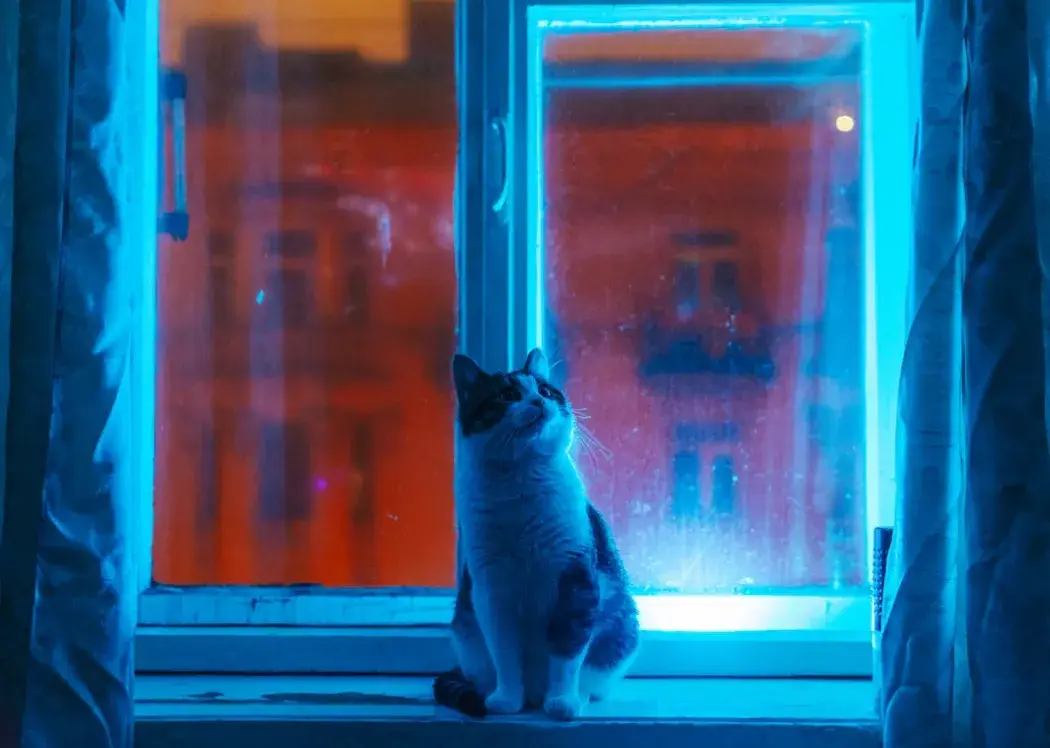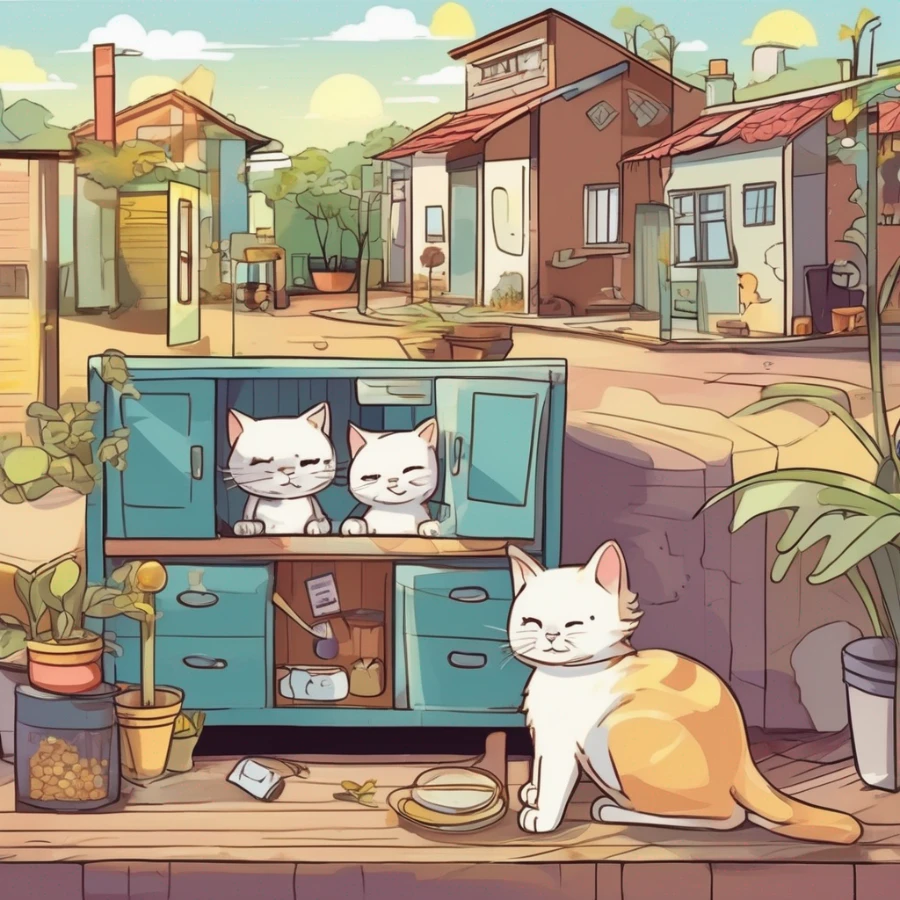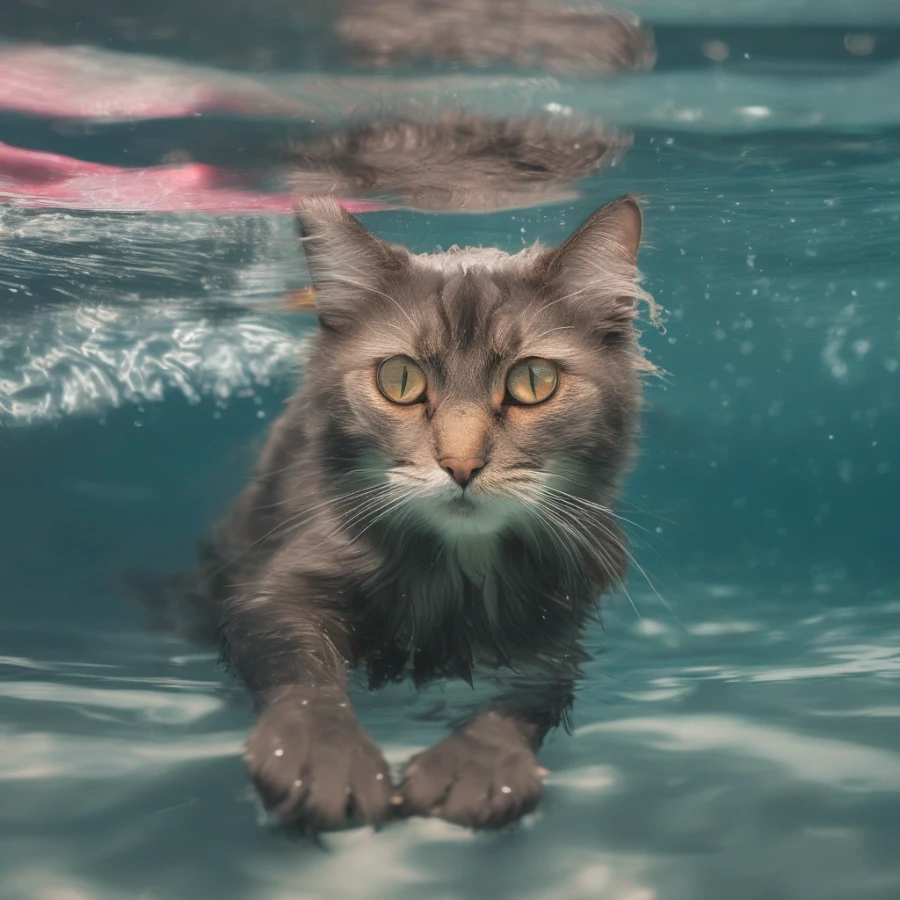What Color Lights Do Cats Like

Published by: CatsLib
7 Min Read
Given their sensitivity to blue and green, cats may be more attracted to lights that fall within these color ranges. However, it's important to note that cats' preferences for light are not as well-studied as those of humans, and individual preferences may vary.
If you're considering using lights to stimulate or entertain your cat, blue or green lights might be more appealing to them. Some cat toys and laser pointers also emit red or violet light, which cats can still see, although their sensitivity is lower in the red end of the spectrum.
Always be cautious when using lights around your cat, as prolonged exposure to bright lights, especially lasers, can potentially harm their eyes. It's a good idea to consult with a veterinarian if you have concerns about using specific types of lights or toys with your cat.
Calming Colors for Cats
Cats, like humans, can be affected by colors in their environment. While cats don't see the full spectrum of colors that humans do, they still have preferences and reactions to certain shades. When it comes to creating a calming environment for cats, here are some colors that are generally considered to be soothing:
Soft Blues: Light shades of blue can create a calming and serene atmosphere. These colors can evoke a sense of tranquility and relaxation for both cats and humans.
Soft Greens: Similarly, soft shades of green can be calming and reminiscent of natural outdoor environments. Green can promote a sense of harmony and comfort.
Muted Grays: Neutral and muted gray tones can create a subtle and calming backdrop. These colors are unlikely to be overly stimulating for cats.
Pale Purples: Soft lavender or pale purple colors can also have a calming effect. They might help create a cozy and restful atmosphere.
Earth Tones: Warm earthy colors, such as soft browns and gentle beiges, can create a grounded and calming environment that mimics natural settings.
Pastels: Generally, pastel colors in various shades can be soothing. They are less intense and can help to create a gentle and calming ambiance.
It's important to note that individual cats may have different reactions to colors based on their personalities and experiences. Some cats may not show a strong preference for colors, while others might be more sensitive. When designing a calming environment for your cat, consider their behavior and comfort level in response to different colors. Providing comfortable resting spots, hiding places, and a safe environment overall are equally important factors in creating a peaceful atmosphere for your feline friend.

What Colors Do Cats Hate?
Cats don't necessarily "hate" specific colors, but they may have preferences or reactions to certain colors based on their vision and instincts. Cats' color vision is limited compared to humans, and they primarily see the world in shades of blue and green. Colors that fall outside of this range might appear muted or even gray to them. Here are a couple of points to consider:
Bright and Intense Colors: Cats' eyes are more sensitive to movement and low light conditions than to a wide range of colors. Very bright or intensely colored items might be more stimulating than soothing to cats. For example, they might find flashing lights or extremely vibrant colors to be unsettling.
Red and Orange: Cats' vision is less sensitive to longer wavelengths in the red and orange spectrum. These colors might appear more muted to them, and they might not be as visually stimulating for cats as they are for humans.
Avoid Overstimulation: While not a specific color, it's important to avoid overstimulating your cat with excessive colors, patterns, or contrasts. Cats appreciate calm and safe environments, so keeping their living space relatively simple and consistent can contribute to their well-being.
Consider Individual Preferences: Cats are individuals, and their reactions to colors can vary. Some cats might be more attracted to certain colors due to their unique personalities and experiences. Observing your cat's behavior and reactions can give you a better understanding of what they find comfortable and calming.
Remember that your cat's comfort and well-being depend on factors beyond just color, such as providing a safe and enriching environment, regular interaction, proper nutrition, and healthcare. If you're concerned about your cat's behavior or environment, it's always a good idea to consult with a veterinarian or a professional animal behaviorist for guidance.



